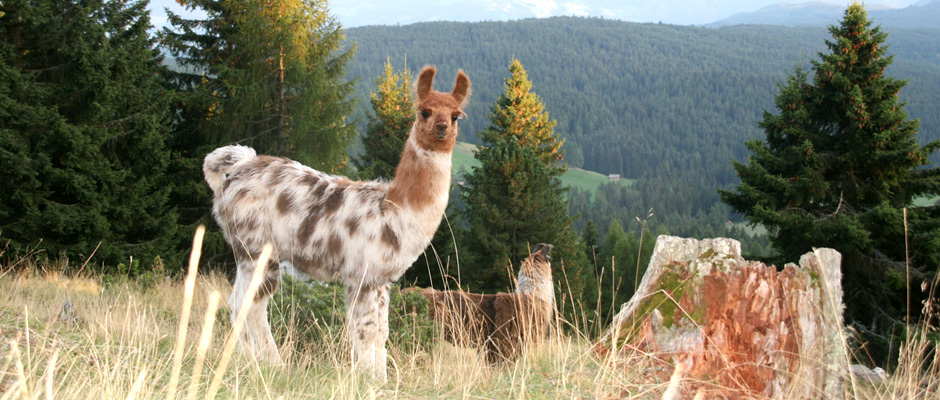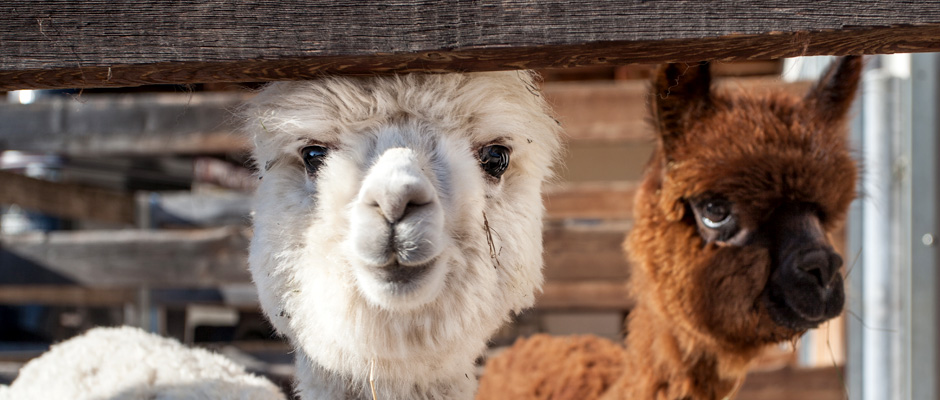Lamas
Lamas are part of the so called South American camelids family, which, other than the regular camel, doesn’t have a dorsal hump. They most probably descend from the wild Guanaco and have already been domesticated since the 3rd century BC by the native inhabitants of the Andes. They kept them as valuable pack animals, but also for their meat, hides and wool. Therefore the lama had great importance to the Inca people and those related to them. More than ten million lamas were cultured and kept when the Spanish conquered South America.
It is true, that lamas spit, but usually they only do so to establish a hierarchy among the animals of the herds or to keep pushy and intrusive conspecifics at distance.
One of their distinctive characteristics is namely their friendly, curious and kind nature.
It is true, that lamas spit, but usually they only do so to establish a hierarchy among the animals of the herds or to keep pushy and intrusive conspecifics at distance.
One of their distinctive characteristics is namely their friendly, curious and kind nature.
| Family | Camelidae |
| Order | Artiodactyla |
| Suborder | Tylopoda |
| Origin and distribution | Originally at home in the South American Andes; today they are found almost all over the world |
| Habitat | High mountain pastures, semi-desert areas, savannas, grasslands, veldt |
| Diet | Grass, moss, lichen, fresh and dry leaves and hay |
| Behavior | Social herd animal |
| Life expectancy | Up to 20 years |
| Weight | 120 to 150 kg |
| Height at the withers | Up to 120 cm, sometimes even 130 cm |
| Coat colors | Plain white, brown and black, spotted or patterned |
| Breeds | light (Classic), medium or dense wool (Wooly), Suri |
| Gestation period | 330-360 days |
| Foals | 1 per year |
| Characteristics | No hump; soft padded feet with two toes (Tylopoda); upper lip is split in two halves; banana shaped ears |





















